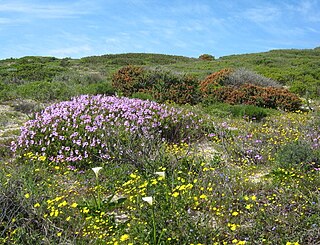
Rice is a cereal grain and in its domesticated form is the staple food of over half of the world's population, particularly in Asia and Africa. Rice is the seed of the grass species Oryza sativa —or, much less commonly, Oryza glaberrima. Asian rice was domesticated in China some 13,500 to 8,200 years ago; African rice was domesticated in Africa about 3,000 years ago. Rice has become commonplace in many cultures worldwide; in 2021, 787 million tons were produced, placing it fourth after sugarcane, maize, and wheat. Only some 8% of rice is traded internationally. China, India, and Indonesia are the largest consumers of rice. A substantial amount of the rice produced in developing nations is lost after harvest through factors such as poor transport and storage. Rice yields can be reduced by pests including insects, rodents, and birds, as well as by weeds, and by diseases such as rice blast. Traditional rice polycultures such as rice-duck farming, and modern integrated pest management seek to control damage from pests in a sustainable way.

Khat, also known as Bushman's tea, especially in South Africa, is a flowering plant native to eastern and southeastern Africa. It has a history of cultivation originating in the Harar area and subsequently introduced at different times to countries nearby in East Africa and Southern Arabia, most notably Yemen. Cultivated by farmers, its leaves are sold on the market to be chewed as a recreational stimulant. The world's largest consumers are Eastern Africans, particularly Somalis, and nearby Yemen, with the largest producers/exporters being Ethiopia and Kenya.

Sisal is a species of flowering plant native to southern Mexico, but widely cultivated and naturalized in many other countries. It yields a stiff fibre used in making rope and various other products. The sisal fibre is traditionally used for rope and twine, and has many other uses, including paper, cloth, footwear, hats, bags, carpets, geotextiles, and dartboards. It is also used as fibre reinforcements for composite fibreglass, rubber, and concrete products. It can also be fermented and distilled to make mezcal.

Rooibos, or Aspalathus linearis, is a broom-like member of the plant family Fabaceae that grows in South Africa's Fynbos biome.

A power station, also referred to as a power plant and sometimes generating station or generating plant, is an industrial facility for the generation of electric power. Power stations are generally connected to an electrical grid.

The Aizoaceae, or fig-marigold family, is a large family of dicotyledonous flowering plants containing 135 genera and about 1,800 species. Several genera are commonly known as 'ice plants' or 'carpet weeds'. The Aizoaceae are also referred to as vygies in South Africa. Some of the unusual Southern African genera—such as Conophytum, Lithops, Titanopsis and Pleiospilos —resemble gemstones, rocks or pebbles, and are sometimes referred to as 'living stones' or 'mesembs'.

Kenaf [etymology: Persian], Hibiscus cannabinus, is a plant in the family Malvaceae also called Deccan hemp and Java jute. Hibiscus cannabinus is in the genus Hibiscus and is native to Africa, though its exact origin is unknown. The name also applies to the fibre obtained from this plant. Kenaf is one of the allied fibres of jute and shows similar characteristics.

Chenin blanc is a white wine grape variety from the Loire Valley of France. Its high acidity means it can be used to make varieties from sparkling wines to well-balanced dessert wines, although it can produce very bland, neutral wines if the vine's natural vigor is not controlled. Outside the Loire, it is found in most of the New World wine regions; it is the most widely planted variety in South Africa, where it was historically also known as Steen. The grape may have been one of the first to be grown in South Africa by Jan van Riebeeck in 1655, or it may have come to that country with Huguenots fleeing France after the revocation of the Edict of Nantes in 1685. Chenin blanc was often misidentified in Australia, as well, so tracing its early history in the country is not easy. It may have been introduced in James Busby's collection of 1832, but C. Waterhouse was growing Steen at Highercombe in Houghton, South Australia, by 1862.

Endemism is the state of a species being found only in a single defined geographic location, such as an island, state, nation, country or other defined zone; organisms that are indigenous to a place are not endemic to it if they are also found elsewhere. For example, the Cape sugarbird is found exclusively in southwestern South Africa and is therefore said to be endemic to that particular part of the world. An endemic species can also be referred to as an endemism or, in scientific literature, as an endemite. Similarly, many species found in the Western ghats of India are examples of endemism.

Dalbergia melanoxylon in French Granadille d'Afrique is a flowering plant in the family Fabaceae, native to seasonally dry regions of Africa from Senegal east to Eritrea, to southern regions of Tanzania to Mozambique and south to the north-eastern parts of South Africa. The tree is an important timber species in its native areas; it is used in the manufacture of musical instruments, sculptures vinyago in Swahili language and fine furnitures. Populations and genomic resources for genetic biodiversity maintenance in parts of its native range are threatened by overharvesting due to poor or absent conservation planning and by the species' low germination rates.

Coffea canephora is a species of coffee plant that has its origins in central and western sub-Saharan Africa. It is a species of flowering plant in the family Rubiaceae. Though widely known as Coffea robusta, the plant is scientifically identified as Coffea canephora, which has two main varieties, robusta and nganda.

Shrubland, scrubland, scrub, brush, or bush is a plant community characterized by vegetation dominated by shrubs, often also including grasses, herbs, and geophytes. Shrubland may either occur naturally or be the result of human activity. It may be the mature vegetation type in a particular region and remain stable over time, or it may be a transitional community that occurs temporarily as the result of a disturbance, such as fire. A stable state may be maintained by regular natural disturbance such as fire or browsing.

The Cardueae are a tribe of flowering plants in the daisy family (Asteraceae) and the subfamily Carduoideae. Most of them are commonly known as thistles; four of the best known genera are Carduus, Cynara, Cirsium, and Onopordum.

Pentzia is a genus of African plants in the chamomile tribe within the sunflower family. One species (P. incana) is naturalized in Australia and in the southwestern United States.

South Africa, officially the Republic of South Africa (RSA), is the southernmost country in Africa. Its nine provinces are bounded to the south by 2,798 kilometres of coastline that stretches along the South Atlantic and Indian Ocean; to the north by the neighbouring countries of Namibia, Botswana, and Zimbabwe; to the east and northeast by Mozambique and Eswatini; and it encloses Lesotho. Covering an area of 1,221,037 square kilometres, the country has over 62 million people. Pretoria is the administrative capital, while Cape Town, as the seat of Parliament, is the legislative capital. Bloemfontein has traditionally been regarded as the judicial capital. The largest and most populous city is Johannesburg, followed by Cape Town and the busiest port city in sub-Saharan Africa, Durban.

Anthemideae is a tribe of flowering plants in the subfamily Asteroideae, which is part of the family Asteraceae. They are distributed worldwide, with concentrations in central Asia, the Mediterranean Basin, and southern Africa. Most species of plant known as chamomile belong to genera of this tribe.

In plant morphology, thorns, spines, and prickles, and in general spinose structures, are hard, rigid extensions or modifications of leaves, roots, stems, or buds with sharp, stiff ends, and generally serve the same function: physically defending plants against herbivory.

Cape Flats Dune Strandveld is an endangered vegetation type. This is a unique type of Cape Strandveld that is endemic to the coastal areas around Cape Town, South Africa, including the Cape Flats.

Cape Flats Sand Fynbos (CFSF), previously known as Sand Plain Fynbos, is a critically endangered vegetation type that occurs only within the city of Cape Town. Less than 1% of this unique lowland fynbos vegetation is conserved.

Peninsula Shale Renosterveld (PSR) is a unique vegetation type that is found only on the slopes of Signal Hill and Devil's Peak in Cape Town, South Africa. It is critically endangered and exists nowhere else.




















